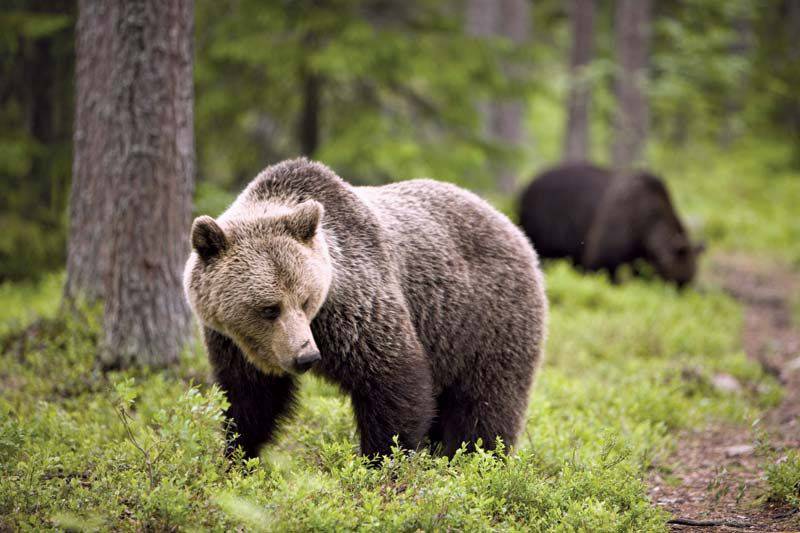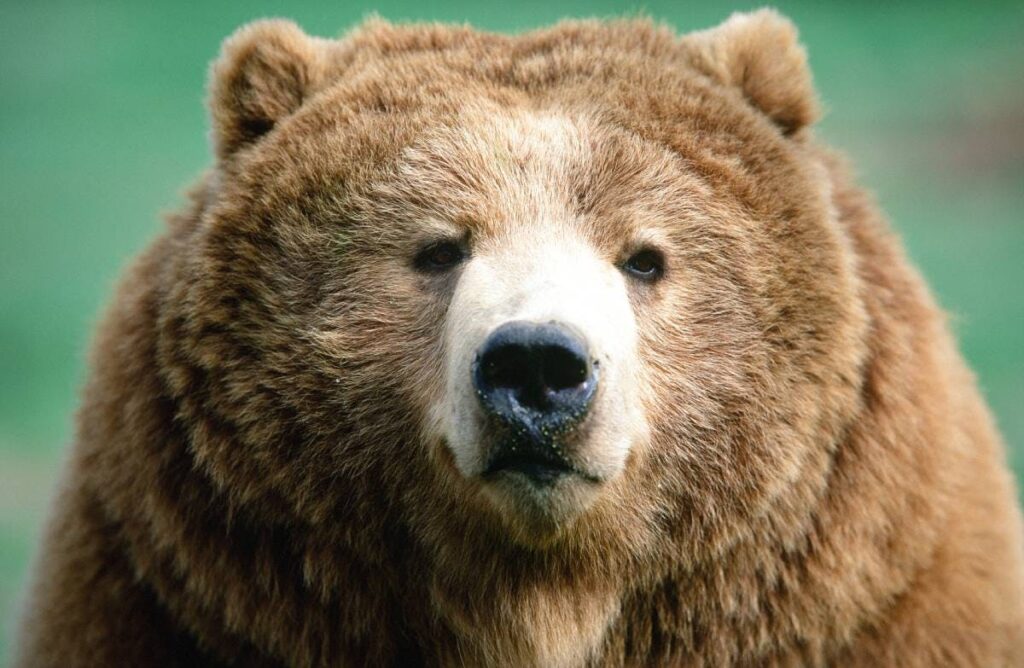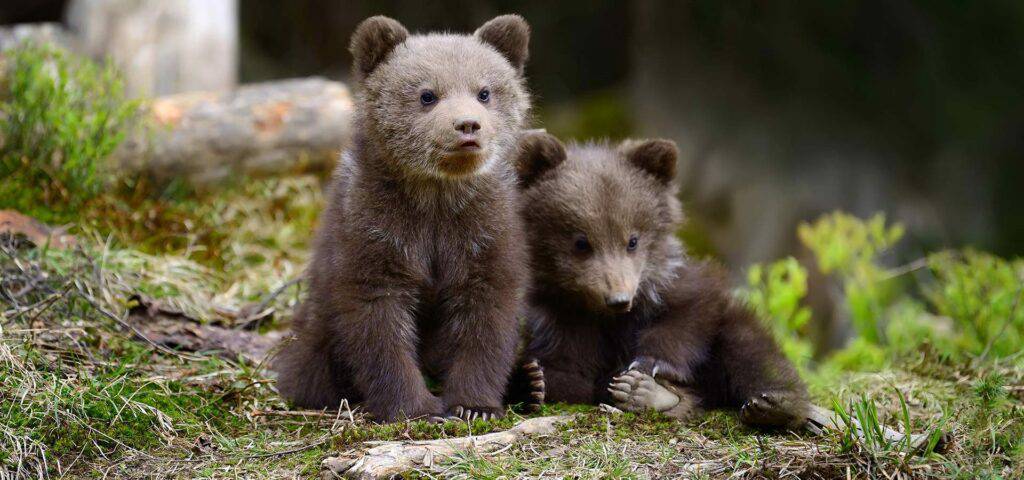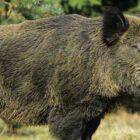Why is The Brown Bear so fearsome?

The brown bear (Ursus arctos), which includes subspecies such as the Eurasian brown bear and the grizzly bear, is the second-largest terrestrial carnivore and in ancient times was the nightmare of every hunter-gatherer in temperate regions of the planet.
The brown bear has existed for at least 1 million years and began to differentiate based on the ecosystem it inhabited, splitting into at least 16 subspecies, some of which are now extinct.
Modern humans had to learn to coexist with these notoriously unfriendly animals, which were much more abundant in the forests of the Pleistocene than they are today.
Native Americans saw bears as animals to fear and respect: they were well aware of what a furious bear could do to a small hunting group and often preferred to avoid any encounter.
In tribes where grizzly hunting was practiced for ritual purposes, the hunting expedition had to be preceded by serious tactical preparation and a propitiatory ritual, and was never conducted with fewer than half a dozen skilled hunters.
The brown bear: the forest giant
The brown bear is an animal of imposing build, although its size can vary considerably depending on the subspecies.
An adult male (usually 30% larger than a female) can exceed 2.5 meters when standing upright and 150 centimeters in height at the shoulder on all fours.
The skull is between 30 and 45 centimeters long and is armed with sharp canines and robust teeth that reflect the wide variety of food in its diet.
Brown bears have enormous paws: the front ones, smaller by 40% compared to the hind ones, can exceed 20 centimeters in length and are armed with curved claws up to 15 centimeters long.
The weight of brown bears varies considerably depending on the geographical region in which they live and the seasonal availability of food: European and Yellowstone bears, for example, have a seasonal average ranging from 115 to 360 kg.
As winter approaches, brown bears begin to hoard any food resources they can find to accumulate fat useful for surviving winter hibernation, which consumes all the animal’s energy reserves because, unlike hibernation, it is not a long uninterrupted sleep but a torpor that is sometimes interrupted by external stimuli.

Exceptional size
We can assume that, in a period when vast forests covered most of Europe, the brown bear could reach even larger sizes than its modern descendants, subjected to strong environmental pressures.
However, in recent times, specimens of extraordinary size have been observed: the maximum weight recorded for a Yellowstone brown bear is nearly 500 kg, while some Slovakian and Bulgarian brown bears have reached weights of 400 kg, about twice the average of adult males in the region.
However, the record for the largest brown bear goes to the Kodiak bear (Ursus arctos middendorffi): it lives in the Kodiak Archipelago in Alaska and for millennia has been a formidable opponent for our ancestors.
The heaviest wild Kodiak bear specimen exceeded 750 kg and had a skull over 70 centimeters long, but a normal adult male weighs seasonally between 272 and 635 kg, with an average annual weight of about 500 kg; females are 30% lighter but equally fierce, especially when forced to defend their offspring.
Habitat of the brown bear
The brown bear is probably the most adaptable of all bear species currently existing on the planet. It has no particular altitude preferences, having been observed both in coastal areas and at heights of 5,000 meters above sea level.
Brown bears seem to prefer semi-open areas with patches of dense vegetation where they can rest during the day, but they have been observed in every temperate ecosystem in the northern hemisphere.
In Europe, brown bears tend to inhabit forested areas such as the Alps, the Pyrenees, and the Caucasus; in northern regions, such as Scandinavia, they have adapted perfectly to living in forests densely covered with trees and undergrowth.
Brown bears of Central Asia can also be found in steppe and on the edge of desert areas, such as the Syrian brown bear (Ursus arctos syriacus) or the Gobi brown bear (Ursus arctos gobiensis). In Siberia, this animal has adapted perfectly to pine forests, where it finds refuge to rest between meals.

The lifestyle of the brown bear
Female brown bears have a particular reproductive mechanism: after being fertilized by a male, the egg begins to divide and remains in the uterus for about six months.
During winter hibernation, the fetuses adhere to the uterine wall, and if the mother has sufficient energy reserves, they will become cubs that will be born eight weeks later while the mother is in hibernation. If the bear does not have enough energy resources, the embryos are reabsorbed, and no birth occurs.
A mother bear usually gives birth to 1 to 3 cubs (4 cubs are uncommon, 5-6 even rarer) weighing between 300 and 500 grams, which will reach 7-9 kg after nursing and a level of development that allows them to feed on solid food.
The education of the cubs is entirely entrusted to the mother: the cubs will follow her for 2-4 years, during which they will learn survival techniques such as hunting, fishing, defense against predators, where to find the best shelter for winter, and which food resources are most nutritious.
Smart and long-lived
The brown bear is a solitary animal, very intelligent, and an opportunist not particularly active as a predator, although it does not disdain hunting and fishing if it does not require excessive energy expenditure.
The brown bear has the largest brain, in proportion to body mass, of all terrestrial carnivores. It has repeatedly demonstrated the ability to use tools (such as exploiting rocks covered with shells to scratch its back), a skill that requires advanced cognitive functions.
The brown bear is not strongly territorial: it is possible to find several adults coexisting peacefully in a relatively small area as long as there are no disputes over a fertile female or in a situation of food scarcity.
It is not uncommon for many bears to gather episodically in the same area in search of food or attracted by the smell of a carcass: although they are not strictly territorial, in the face of a food source contested by several individuals, spontaneous hierarchies based on age and size form, or determined by aggressive signals or brief physical clashes.
The brown bear is a long-lived animal: females can survive up to 28 years old and maintain reproductive peaks until they are 20 years old. On average, a bear can live about 25 years, regardless of sex; the oldest bear ever observed in the wild was 37 years old, while in captivity, an adult male can survive up to 47 years.
Infant mortality among bears living in areas protected from hunting ranges from 13 to 44% within the first year of life but can exceed 75% in some regions. A bear cub is a relatively easy prey for predators such as wolves, Siberian tigers, and other brown bears, but it is malnutrition that causes most victims during the first two years of life.
Brown Bear Diet
Just like humans, the bear is an excellent opportunist and does not disdain or overlook any food source it finds along its way, whether it be berries, animal carcasses, or roots and tubers.
Just like us, bears also try to avoid wasting too much energy to obtain precious calories, a tendency that in the past led them to compete for the same resources desired by our ancestors.
About 90% of the food consumed by a brown bear consists of plant matter such as berries, fruits, acorns, mushrooms, mosses, roots, and tubers, totaling over 200 species of plants and fungi.
Although meat and fish are excellent sources of protein and fat and their presence in the diet varies depending on the region and season, the carbohydrates and sugars from plants consumed by brown bears largely contribute to fat accumulation in preparation for winter.
Another important food source for brown bears worldwide is insects: brown bears in Yellowstone, for example, can consume up to 40,000 moths in a single day during the massive migrations of Euxoa auxiliaris and they do not disdain bees, ants, worms, and beetles of all kinds.
Although they do not particularly enjoy active hunting, the brown bear is potentially capable of hunting every large mammal living in its habitat.
Traces of over 100 different species of mammals have been found in bear feces, from small rodents like squirrels and mice to much larger animals such as marmots and beavers.
Attacks on ungulates such as deer, reindeer, and elk are also not uncommon, especially in wooded areas where brown bears can lay ambushes and overcome their disadvantage in speed and agility.










